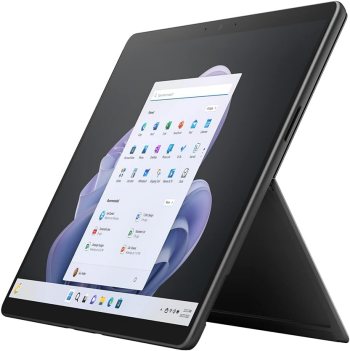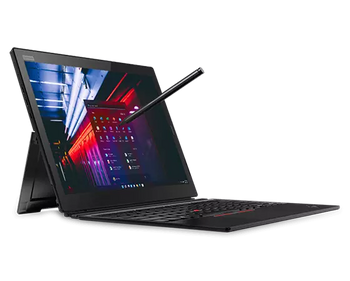- High-resolution display
- Strong performance
- Lightweight and portable
- Long battery life
- Robust build quality
- Excellent display
- Strong security features
- Long battery life
- Accessories sold separately
- Relatively high cost
- Expensive
- Heavier than some competitors
Microsoft Surface Pro 9 vs Lenovo ThinkPad X1 Tablet
The world of windows tablets has become increasingly competitive, with top manufacturers like Microsoft and Lenovo offering high-end devices that cater to different needs and preferences. In this comparison, we'll delve into the features, specifications, and pros and cons of two popular models: the Microsoft Surface Pro 9 and the Lenovo ThinkPad X1 Tablet.
Design and Display
The Microsoft Surface Pro 9 boasts a sleek and sturdy design, with a magnesium alloy body that weighs just 879 grams. The device features a 13-inch PixelSense touchscreen display with a resolution of 2880 x 1920 pixels, offering vibrant colors and excellent brightness. The screen is also compatible with the Surface Pen, making it an excellent choice for creatives and note-takers.
In contrast, the Lenovo ThinkPad X1 Tablet has a more utilitarian design, with a durable aluminum body that weighs around 930 grams. The device features a 13-inch IPS touchscreen display with a resolution of 3000 x 2000 pixels, providing crisp and clear visuals. While the ThinkPad X1 Tablet's display is slightly sharper than the Surface Pro 9's, it lacks the same level of color accuracy and brightness.
Performance
Both devices are powered by Intel Core processors, but the Microsoft Surface Pro 9 offers a wider range of configuration options, including up to an Intel Core i9 processor, 32GB of RAM, and 1TB of storage. This makes it an excellent choice for demanding tasks like video editing, 3D modeling, and software development.
The Lenovo ThinkPad X1 Tablet, on the other hand, is available with up to an Intel Core i7 processor, 16GB of RAM, and 1TB of storage. While it's still a powerful device, it may not be able to keep up with the Surface Pro 9 in terms of raw processing power.
Battery Life
The Lenovo ThinkPad X1 Tablet has a slight edge when it comes to battery life, with up to 9 hours of usage on a single charge. The Microsoft Surface Pro 9, on the other hand, offers around 7-8 hours of battery life, depending on the configuration and usage patterns.
Ports and Connectivity
The Microsoft Surface Pro 9 features two USB-C ports, a Surface Connect port, and a microSD card slot. While it lacks a traditional USB-A port, it's compatible with a wide range of accessories and peripherals via the Surface Dock.
The Lenovo ThinkPad X1 Tablet, on the other hand, offers two USB-C ports, two USB-A ports, an HDMI port, and a microSD card slot. This makes it a more versatile option for users who need to connect multiple devices or peripherals.
Conclusion
Both the Microsoft Surface Pro 9 and the Lenovo ThinkPad X1 Tablet are excellent examples of windows tablets that cater to different needs and preferences. While the Surface Pro 9 excels in terms of design, display quality, and performance, the ThinkPad X1 Tablet offers a more utilitarian design, longer battery life, and greater port versatility.
Ultimately, the choice between these two devices will depend on your specific needs and priorities. If you're a creative professional or someone who values a premium design and excellent display quality, the Microsoft Surface Pro 9 may be the better choice. However, if you're looking for a more practical and versatile windows tablet with longer battery life and greater port options, the Lenovo ThinkPad X1 Tablet is definitely worth considering.

































